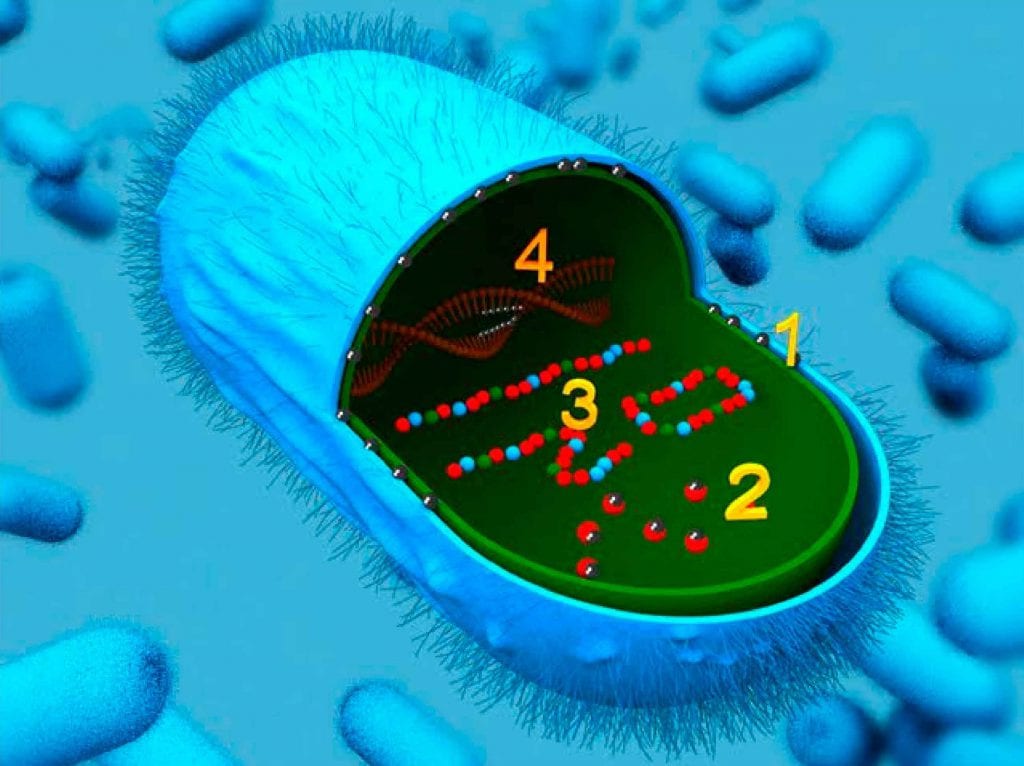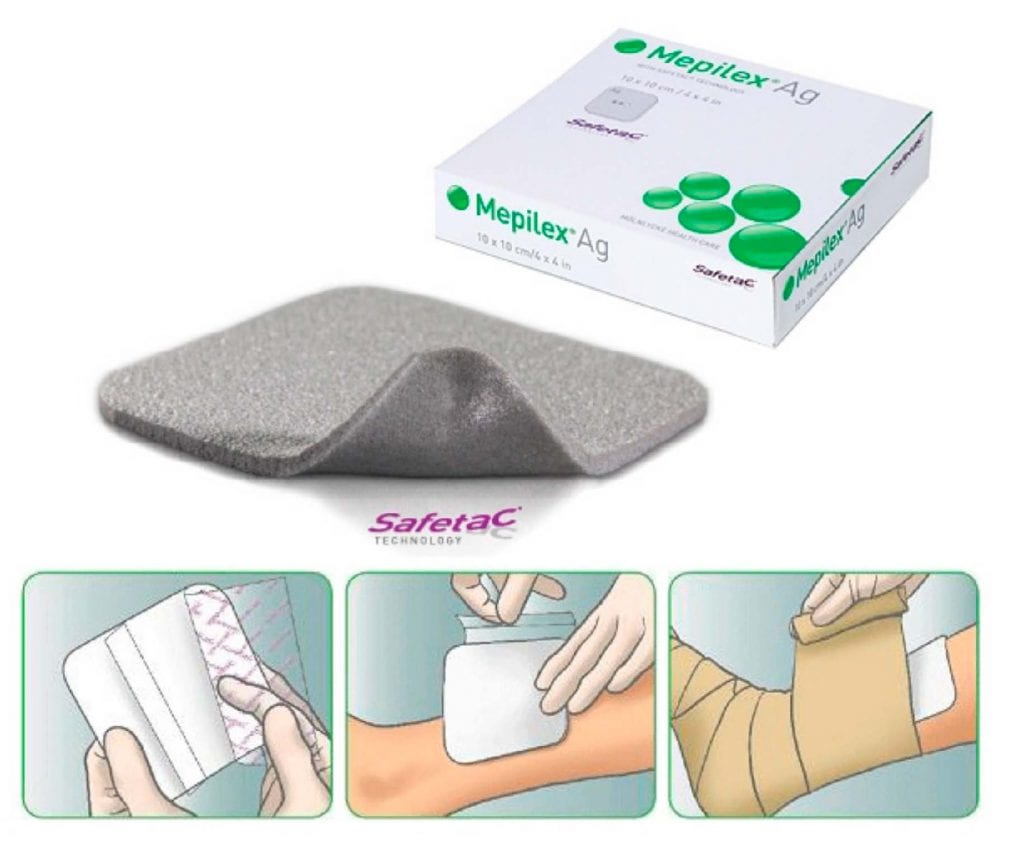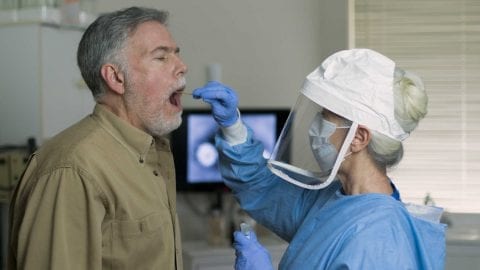INTRODUCTION
Silver is a soft and shiny transition metal which is known to have the highest reflectivity of all metals. Among its many useful properties, silver is recognized to have antimicrobial activity. Silver is known to be biologically active when it is dispersed into its monoatomic ionic state (Ag+) especially when it is soluble in aqueous environments. This is the same form that appears in ionic silver compounds such as silver nitrate and silver sulfadiazine, which have been frequently used to treat wounds.
Another form of silver is its native nanocrystalline form (Ag0). The metallic (Ag0) and ionic forms can also appear loosely associated with other elements such as oxygen or other metals and can form covalent bonds or coordination complexes. To date, there are three known mechanisms by which silver acts on microbes. Firstly, silver cations can form pores and puncture the bacterial cell wall by reacting with the peptidoglycan component. Secondly, silver ions can enter the bacterial cell, both inhibiting cellular respiration and disrupting metabolic pathways resulting in the generation of reactive oxygen species. Lastly, once in the cell, silver can also disrupt DNA and its replication cycle (Figure 1). A recently published review includes more details about the bactericidal mechanisms of silver, along with methods of silver nanoparticle preparation. Throughout history, silver has consistently been used to restrict the spread of human disease by incorporation into articles used in daily life. The earliest recorded use of silver for therapeutic purposes dates back to the Han Dynasty in China circa. 1500 B.C.E.
Silver vessels and plates were frequently used during the Phoenician, Macedonian, and Persian empires. Families of the higher socioeconomic classes during the middle-ages were so acquainted with the usage of silver that they developed bluish skin discolorations known as argyria, an affliction which may have led to the term ‘blue blood’ to describe members of the aristocracy. Modern medicine utilizes medical grade forms of silver, such as silver nitrate, silver sulfadiazine, and colloidal silver.

Figure 1. Silver’s action on a bacterial cell. 1. Silver can perforate the peptidoglycan cell wall. 2. Silver inhibits the cell respiration cycle. 3. Metabolic pathways are also inhibited when in contact with silver. 4. Replication cycle of the cell is disrupted by silver particles via interaction with DNA.
The discovery of antibiotics in the early 20th century led to a cessation in the development of silver as an antimicrobial agent. However, the development of increasing levels of bacterial resistance to most antibiotics in recent years has led to a reexamination of the potential of this ancient remedy including studies with patients using colloidal silver and antibiotics.
Today, under the current pandemic, Silver is being tested and used for its antibacterials and virus-killing properties. Many nanotechnology applications are already underway in several verticals as outlined below.
ANTIMICROBIAL SILVER FOR CLINICAL AND MEDICAL USAGE
Below we present a selection of some of the most interesting and unique patented products which utilize silver for their bactericidal action in the medical field, including therapies based on silver’s antimicrobial properties.
Surface coatings incorporating silver are a common application. One new approach is a method for producing ready-packed medical apparatus which sterilizes itself upon the opening of the package, by creating a vapor that activates a silver-containing hydrophilic surface coating. The antimicrobial properties of silver have been highly valued in the medical application where implanted devices are coated with silver nanoparticles for the antimicrobial effects, but manufacturers need to be aware that this application is a very broad claim.
Invasive surgical tools such as medical-grade needles can also be coated with silver nanoparticles as described in its related patent. Medical devices that are directly introduced into the human body that contain silver include vascular catheters, bone implants, and biliary duct brackets. Another application of antimicrobial silver has incorporated it into coatings applied to the interior wall surface of a hospital or clinic building.
Another general use is for topical treatments. Numerous topical gels with different formulations of silver have been patented. Silver was first used to treat burn wounds in the form of 0.5% silver nitrate solution and silver sulfadiazine cream in 1960. However, this was impractical as the dressings required rehydration every couple of hours. To overcome this limitation silver nanoparticle-based gels and silver salt-based gels have been developed, with all approaches still considered novel.
Silver-based wound dressings have greatly improved in efficacy compared to standard dressings, and more complex dressings have been developed. New knowledge in burn wound management led to the discovery of a method to immobilize silver nanoparticles on a gel-support matrix which is attached to a wound dressing. A recently commercialized wound dressing allows prolonged use of the dressing for up to 7 days or until saturation, without reapplication (Figure 2).
It is made possible through its design, which slowly releases silver ions upon contact with wound exudates. Its highly absorbent padding is also coated with a layer of silicone which is aimed to reduce pain during the removal and reapplication of the dressing. The use of silver with wound dressings is known to reduce scarring and such formulations are widely used. Silver-based wound dressings are available under brand names with different compositions, such as Mepilex® Ag, Acticoat™, Aquacel®, Flaminal®, Allevyn® Ag, and Biatain® Ag, SILVERCEL™. Other products containing a silver component, not specifically developed for wound healing, have been used for the treatment of bacterial infection.

Figure 2. Mepilex® Ag with instructions for application. Images: Mölnlycke Health care, Sweden.
Silver has also been applied across the dental field. Silver has been the key component in dental amalgam fillings for more than one hundred years. However, its antimicrobial properties were not patented. Silver is used in the prevention of infection during and after dental surgery. Dental support fixtures made out of silver and denture materials, and other body restoration objects, having silver nanoparticles as additives can reduce bacterial infections, especially during the first few months of installation (Products No. 16 and 17).
ANTIMICROBIAL SILVER IN DOMESTIC PRODUCTS
Silver is widely incorporated into surface coatings of electrical goods such as automated bathtubs, laundry washing machines, air purifiers with silver filters and refrigerators, to produce ‘bacteria-free’ products. The is a whole industry around the application of silver nanoparticles to household objects with frequent handling such as keyboards, bath safety aids, and bathroom safety handles. Also, a lot of uses are found around special stand-alone products such as containers for meat or water/wine/milk storage are useful applications where bacterial contamination may present a health issue.
Despite the many beneficial innovations in the use of silver as an antimicrobial agent, its application in cleaning products and disposable tools such as gloves, disinfectant wipes, and cleaning detergent may have negative environmental impacts. Cleaning products, once used, usually end up in sewage treatment systems, and eventually the environment. This is a concern for silver nanoparticles, as there are currently no effective methods for filtering out silver nanoparticles. The release of large amounts of silver products into the environment may lead to disturbances of the microbiological ecosystem and potentially lead to bacterial resistance to silver. Consequently, alternative methods of sanitization should be considered such as the application of alcohol or bleach which are sufficient for domestic purposes or employing ‘fixed’ silver-containing surfaces that reduce the risk of environmental release.
Apart from being a threat to beneficial environmental bacteria, another issue to be addressed is the possible longer-term reduction of the potency of silver in killing microbes. Since the discovery of antibiotics, the efficacy of antibiotics has been compromised by over-prescription and over-usage, leading to the current antibiotic crisis. The presence of low levels of antibiotics in the environment fosters the generation of multiple drug-resistant strains. Silver is not immune to the generation of bacterial resistance, with several reports in recent years. This history suggests a need for a systemic reassessment of the usage of silver in domestic products, so that it is not used too extravagantly, or released haphazardly.
ANTIMICROBIAL SILVER IN AGRICULTURAL AND INDUSTRIAL PRODUCTS
Silver has also been used for a variety of agricultural and industrial products. In industry, large scale water purification can be made cost-effective by using colloidal silver for purification as it is needed only in small quantities and can purify large quantities of water, though potential environmental risk needs to be considered. For agriculture use, silver has been incorporated in nylon ropes that are used to tie down plants, cover them with netting, and for various other applications. These ropes normally decay after time due to bacterial biofilm formation, so the silver prevents this decomposition. Agricultural use of silver products must be carefully assessed to avoid any impact on the microbial flora and symbiosis. The growth of healthy crop plants relies heavily upon the formation of symbiotic microbes around the roots such as nitrifying bacteria and mycorrhiza. Studies have shown that the contact of bioactive silver to nitrifying bacteria impedes the formation of symbiotic channels.
An example of agricultural use is the treatment of plant infections which uses Ag (I) and Ag (II) to treat infections in plants. In industrial settings Silver coatings can be beneficial in machines that require a completely sterile environment to manufacture food or medical-grade products, employing silver in the parts that come in direct contact with the products.
Machinery parts are usually designed for prolonged periods and incorporating silver particles into these materials provides an effective means of isolation and retention of silver so that it is not released into the environment easily.
Polymers are extremely versatile and when impregnated with silver nanoparticles, they can be used for numerous applications, such as mass-produced food storage containers and industrial-scale waste bins. Sterility in the food and therapeutics industry is crucial, so the incorporation of silver into manufacturing equipment in contact with consumer products can be regarded as an appropriate usage. Moreover, in the case of daily used food containers, much has changed with the application of Silver nanotechnology, the frequent usage of silver does not have the risk of accumulation in the human body, due to the ingrained nature of nanotechnology in the materials it is applied.
Water filtration systems normally contain immobilized silver nanoparticles for water purification purposes. The invention and manufacture of industrial cleaning solutions containing silver is a potentially widespread application, as there is a need for instant effective sanitization to prevent bacterial transmission. However, precautions must be observed to prevent environmental release.
CURRENT USES OF METALS IN THE NOVEL CORONAVIRUS (COVID-19) OUTBREAK
Under the current environment, most applications are focused on healthcare PPEs and medical devices applications, of which a few examples are 3D printing TPU/ABS filaments with Copper and industrially produced TPE PPF2 masks with Silver nanotechnologies. On the consumer front, we are also seeing masks, toys, fabrics, and metal fixtures mainly looking at using Silver nanotechnology like Nanox Clean.
All the current applications are based on tested (FDA approved) and inexpensive Silver particle nanotechnologies applied easily and quickly during the polymer, plastic, or fabric production process.
Some of the case studies published here are recent applications for the crisis under strict emergency use without false claims regarding COVID-19. Most of the providers of nanotechnology are being tested for the novel coronavirus 2019, with results coming out soon.
Silver has wide and ever-expanding applications in medicine, health care, and other daily life activities, with a focus on the applications during the past decade. An analysis of the growth of patents describing antimicrobial silver applications is presented throughout recent studies (please see footnote), along with the commentary of selected examples demonstrating some of the more interesting applications. Our analysis has separated these discussions of the use of silver into four general categories: Medical applications, personal care products, domestic household products, and agricultural/industrial applications.
Sources: Antimicrobial Silver in Medicinal and Consumer Applications: A Patent Review of the Past Decade (2007⁻2017). Sim W., Barnard R.T., Blaskovich M.A.T., Ziora Z.M. https://www.ncbi.nlm.nih.gov/pubmed/30373130 Nanox, Silver Nanotechnology Applications, www.nanox.com.br/en IEC Partners, COVID-19 Business Response Report, www.iecpartners.com










